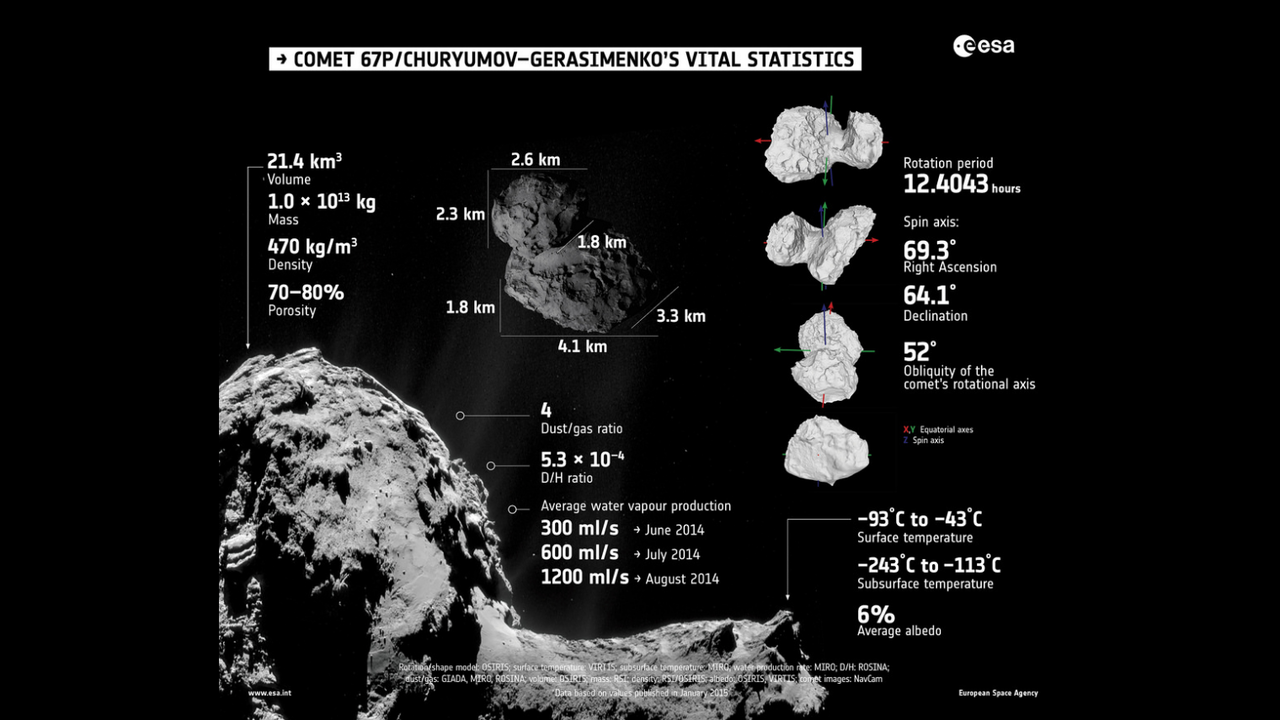The European Space Agency’s Rosetta spacecraft has made a very significant discovery – information that has important implications about how life on Earth may have developed. Rosetta has detected glycine (an amino acid) and phosphorous in 67P’s coma…the small “atmosphere” that surrounds a comet’s nucleus – particularly as it approaches a star, when warming melts some of the comet’s ices and gases.
It is critical to understand that life doesn’t just magically form. There is a certain amount of chemistry that must occur for those initial single-cell organisms to develop, and for that to happen, the correct ingredients need to come together. The two ingredients found at Comet 67P, glycine and phosphorous, are key components of DNA and cell membranes.
Recommended Videos
This isn’t the first time that astronomers have detected glycine in a comet. Back in 2004, a NASA mission called Stardust flew through the tail of Comet Wild 2 and actually collected dust samples and returned them to Earth. However, scientists were not able to conclusively rule out that the glycine detected in Comet Wild 2’s samples weren’t due to contamination here at home. So that glycine detection had to remain as a suspicion, until now.
Rosetta’s strongest detection of glycine and phosphorous came during Comet 67P’s closest approach to the Sun last August, when outgassing was strongest. Glycine is the tough one to detect because, when comets are farther from the Sun in the cold of deep space, the gases they contain are frozen. The problem with glycine is that it doesn’t sublimate (change directly from a solid to a gas) until the temperature reaches about 300°. So Rosetta had to wait until Comet 67P heated up enough for the frozen glycine to sublimate and escape the nucleus into the coma above…where the spacecraft could directly detect it.
In addition to the glycine itself, “at the same time, we also detected certain other organic molecules that can be precursors to glycine, hinting at the possible ways in which it may have formed,” said Kathrin Altwegg, principal investigator of the instrument that made the measurements.
Alright, so what does any of this have to do with life on Earth? A long, long time ago, after the earth formed and cooled, our planet was bombarded by a bunch of comets and asteroids. Many scientists believe that this period of bombardment brought the water we have, as well as the building blocks from which life formed. Direct detection of those building blocks on Comet 67P bolsters the theory that life on Earth originated with those ingredients brought here by comets and asteroids.
Oh, and about that water: Rosetta also detected water ice on Comet 67P, as I’ve reported in the past. However, it’s a very different form of water than the type we have here on Earth so, even if comets played a lesser role in bringing water here than previously thought, we now know conclusively that at least some of them contain ingredients which, if brought to Earth, would have initiated the development of primitive life.
Rosetta has snapped the best close-up images we’ve ever seen of a comet…I’ve posted a bunch of them for you to look at here. Truly amazing…

